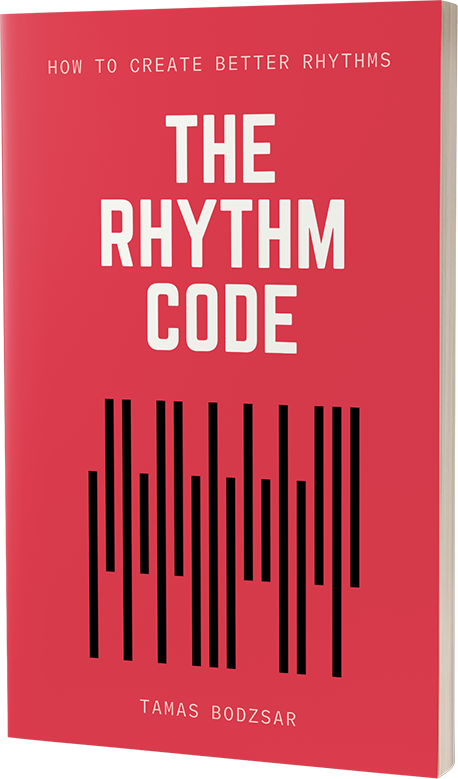
A funky groove is probably the coolest thing you can do with a bass guitar. And if you are writing songs in a genre that fits this bass style, you definitely need to know how to write a groovy bass line. Of course, sometimes you can trust your bass player to create a groove around your chord progression, but the reason you want to create your own bass groove is that a unique bass groove will make your song more unique. And of course, you, as a creator, want to hear the bass sound exactly how you want it to be.
Keep in mind that you can write a groovy bass in almost any genre. For example, even though I write Cuban-style salsa music, I like to write groovy bass lines. Listen to this song I write, and how groovy is the bass in it: https://bit.ly/3vNGlrD
Even though I don’t know how to play the bass guitar, many professional bass players told me that I can write bass lines as if I were a bass player. So let me show you how I create amazing funky, groovy bass lines for my songs.
Follow the chord progression
The very first thing we need to make clear is that the bass always follows the chord progression. What does it mean exactly? It means that the bass almost always plays the root note of the chords. Especially at the first beat of the bar. This is because the role of the bass is determining the chords. For example, if the piano plays the notes A – C – E, you might think that it’s an A-minor chord. But it’s not an A-minor chord unless the bass plays the note “A”. However, if the bass plays the note F, then it’s an F major seventh chord (F – A – C – E).
So the bass always has to play the root note of the chord at the first beat of the bar. But of course, the bass doesn’t only play the root note. So what other notes we can write for the bass? The second most used chord note in the bass is the fifth. So if you are using only two notes in your bass line, it has to be the root note and the fifth. Other notes in the key can be used, even if they are not chord tones! Especially in a funky bass line.
Use anticipation
Rhythm is the most overlooked topic in songwriting, even though it’s one of the most important aspects of a good song. And this is especially true for groovy bass lines. A funky bassline is very rhythmical. But what makes a good rhythm? Here is a secret nobody talks about: a good rhythm is a good mix of downbeats and anticipations. If you play all your notes on the downbeats (one-two-three-four), it will sound dumb. A good rhythm contains a lot of anticipations.
What is anticipation? It’s when you play a note earlier than expected. For example, playing a root note not on the first beat, but an eighth note earlier. Or sometimes a quarter note earlier. These anticipations give a good rhythm for your bass line.
Use the Rhythm Code™
The question is, when do we use these anticipations, and when do we play on the downbeat? It took me years to figure this out, and I created a complete formula for this. I call this formula the Rhythm Code. So what is it? The Rhythm Code is a hidden rhythmical system behind all successful songs. The same way we have a hidden system for tonality (chords, scales, and keys), there is a hidden system for rhythm too. But nobody noticed it yet.
The Rhythm Code is especially used in very rhythmical songs. It is used in Latin genres, in jazz and funk music too. If you hear a funky bass line, you can be sure that it is based on the Rhythm Code. Think about the bass lines of Jamiroquai, Tower of Power, Marcus Miller, Red Hot Chilli Peppers. They ALL use the Rhythm Code (unconsciously) to create groovy bass lines. You can learn to use the Rhythm Code from our songwriting course. It is the biggest hack you can learn if you want to create groovy bass lines.
Mix short and long notes
Listen to some of the songs that contain groovy bass lines. A good groovy bass line contains both short and long notes. So when do we use long notes and when do we use short notes? The truth is, there is no recipe for this. This is kind of like a language. And the best way to learn a language is by listening to it. Lots of listening, lots of input. When you write a bass line, try to follow your intuition. Writing a bass line is not different from writing a melody. A groovy bass line has to make sense, it has to be melodic. So being conscious about alternating between short notes and long notes is very important.
Use ghost notes
Using all those that we talked about so far will help you make great bass grooves. But you can bring your groove even further, you can make it sound even more professional, more live by using ghost notes. Ghost notes are what really differentiate professional bass players from amateurs. What is the purpose of ghost notes? They make the bass groove sound even more rhythmical. They are kind of like adding a hi-hat to a drum beat. They fill out little spaces between normal notes.
So what are ghost notes? It’s when the bass player is dampening the strings with his left hand, and playing “dead” notes with his right hand. These are very short, percussive sounds. The question is, where do we put ghost notes? There is no strict rule for this, but again, you need to listen to a lot of bass grooves and you have to use your intuition. Whatever feels right for you. You don’t have to fill ALL the rests within a groove.
The secret pattern behind successful songs
Get the eBook for $4.99

